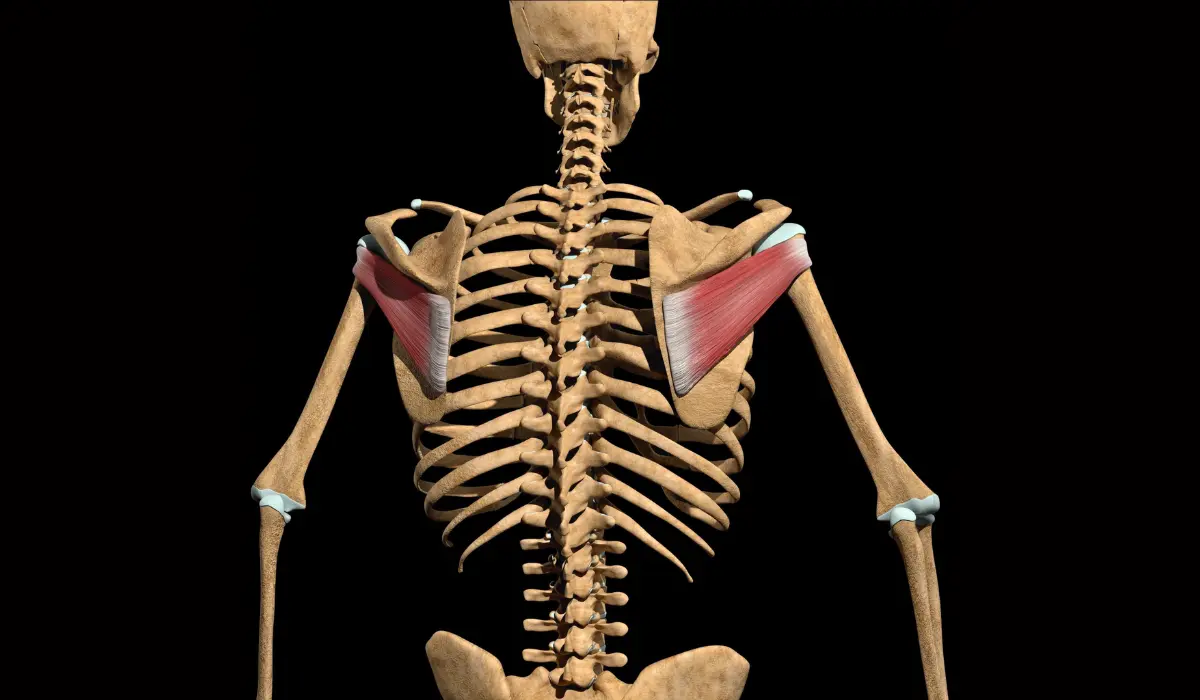Shoulder pain can be a debilitating and frustrating experience, affecting our daily activities and overall quality of life. One common cause of shoulder discomfort is infraspinatus pain, a condition that arises from the inflammation or strain of the infraspinatus muscle. This often-overlooked muscle plays a crucial role in the movement and stability of the shoulder joint, making its proper functioning essential for a range of activities. In this article, we’ll explore what infraspinatus pain is, its causes, symptoms, and effective treatments to help you find relief.
What Is Infraspinatus Pain?
The infraspinatus is a small but mighty muscle located in the back of the shoulder blade (scapula). Its primary function is to rotate the arm outward and stabilize the shoulder joint during various arm movements. Infraspinatus pain occurs when this muscle becomes strained, inflamed, or irritated, leading to discomfort and restricted mobility.

Infraspinatus pain can manifest in different ways, ranging from a dull ache to sharp, shooting sensations. It may be felt in the upper back, near the shoulder blade, or even radiate down the arm. This pain can be exacerbated by certain movements, such as reaching overhead, lifting objects, or engaging in activities that require repetitive arm motions.
What Does Infraspinatus Pain Feel Like?
The symptoms of infraspinatus pain can vary from person to person, but some common experiences include:
- Aching or throbbing discomfort in the upper back or shoulder blade area
- Difficulty reaching overhead or behind the back
- Weakness or reduced strength when lifting objects
- Tenderness or tightness in the infraspinatus muscle
- Stiffness or limited range of motion in the shoulder joint
In some cases, infraspinatus pain may also be accompanied by other symptoms, such as headaches, neck pain, or tingling sensations down the arm.
Infraspinatus Muscle Pain Causes
Infraspinatus pain can arise from various underlying causes, including:
1. Overuse or repetitive strain
Activities that involve repetitive overhead motions or heavy lifting can put excessive strain on the infraspinatus muscle, leading to inflammation and pain.
2. Poor posture
Maintaining poor posture, particularly hunched shoulders or a forward head position, can create imbalances and strain the infraspinatus muscle.
3. Injury or trauma
Direct trauma to the shoulder area, such as a fall or impact, can cause damage or inflammation to the infraspinatus muscle.
4. Pinched nerve
In some cases, a pinched or compressed nerve in the neck or shoulder region can cause referred pain in the infraspinatus muscle.
5. Muscle imbalances
Imbalances between the muscles that support the shoulder joint can lead to overcompensation and strain on the infraspinatus muscle.
What Are Infraspinatus Trigger Points?
Infraspinatus trigger points are highly localized, hypersensitive areas within the infraspinatus muscle. These trigger points can cause referred pain, muscle weakness, and restricted mobility. Identifying and addressing infraspinatus trigger points is often a crucial step in managing and treating infraspinatus pain.
Infraspinatus trigger points can develop due to muscle overuse, poor posture, or injury. They can also be associated with other conditions, such as myofascial pain syndrome or fibromyalgia. Trigger points in the infraspinatus muscle can refer to pain in the upper back, shoulder blade, or even down the arm.
Infraspinatus Pain Treatments
Fortunately, there are various treatment options available to manage and alleviate infraspinatus pain. The most effective approach often involves a combination of therapies tailored to the individual’s specific needs and underlying causes. Here are some common treatments for infraspinatus pain:
- Rest and activity modification: Allowing the infraspinatus muscle to rest and avoiding activities that aggravate the pain can promote healing and reduce inflammation.
- Physical therapy: Working with a licensed physical therapist can help address muscle imbalances, improve posture, and provide targeted exercises to strengthen and stretch the infraspinatus muscle.
- Trigger point therapy: Techniques such as massage, dry needling, or trigger point injections can help release and relax infraspinatus trigger points, reducing pain and improving mobility.
- Anti-inflammatory medications: Over-the-counter or prescription anti-inflammatory drugs can help reduce inflammation and alleviate pain associated with infraspinatus muscle strain or injury.
- Corticosteroid injections: In some cases, a corticosteroid injection into the infraspinatus muscle or surrounding area may be recommended to provide relief from severe or persistent pain.
- Postural corrections: Addressing poor posture through ergonomic adjustments, exercises, and awareness can help alleviate strain on the infraspinatus muscle and prevent further aggravation.
- Complementary therapies: Techniques such as acupuncture, massage, or chiropractic care may be beneficial for some individuals in managing infraspinatus pain.
It’s important to note that the most effective treatment plan may involve a combination of these approaches, tailored to the individual’s specific needs and underlying causes.
Also Reach: Abductor Hallucis Pain: Symptoms, Causes And Treatments
Conclusion
Infraspinatus pain can be a frustrating and limiting condition, but with proper understanding and treatment, relief is possible. By recognizing the symptoms, identifying the underlying causes, and seeking appropriate care, individuals can find effective ways to manage infraspinatus pain and restore their shoulder strength and mobility. Remember, early intervention and a comprehensive approach are key to achieving long-term relief and preventing further complications. If you’re experiencing persistent infraspinatus pain, don’t hesitate to consult with a healthcare professional for an accurate diagnosis and personalized treatment plan.
Frequently Asked Questions
The pain test involves resisting outward rotation of the arm against resistance to isolate and test the infraspinatus muscle.
If the infraspinatus is damaged, it can cause weakness in outward rotation and overhead motions of the arm, as well as shoulder instability.
Infraspinatus pain is usually not a serious condition if treated properly, but left untreated it can lead to chronic pain, weakness, and impaired shoulder function.
Yes, infraspinatus tears can cause significant pain, weakness, and limited range of motion in the affected shoulder.
.

